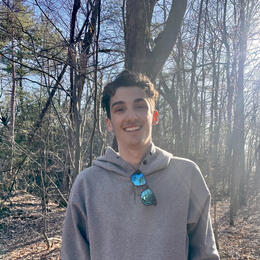Audubon Vermont hosts conservation, education, and policy interns every semester. Interns provide an intern's-eye view of the exciting and important work being done by Audubon Vermont every day. Drew Conde is one of Audubon Vermont's Conservation Interns for the season of 2023. Check out our alumni page for more information and stories!
In the realms of forestry and agriculture, the number of certification programs is anything but diminishing. From internationally recognized certifications of timber products such as the Sustainable Forestry Initiative (SFI) and Forest Stewardship Council (FSC), to targeted regional efforts such as the Northeast Organic Farmers Association certification, the industries of forestry and agriculture have recognized certification as a market-based solution to approach conservation. Bird-Friendly Maple exists at an interface of the two industries, and as such has great potential to develop into a certification system with third party verification. As of now, Bird-Friendly Maple serves as a recognition program; enrolled maple producers work directly with Audubon to manage their sugarbushes with birds in mind. As a result, producers are recognized for their intentional efforts to consider habitat when working in the woods, through unique product labeling opportunities and other marketing materials. Enrolling in the program currently comes at no direct cost to the sugar maker. But what if the program moved to third party auditing with an enrollment fee?
This raises some important questions that force conservationists to consider how they can maximize impact. Is certification truly the best way to achieve the goals of the program? Is there enough financial incentive in certification, or could such a change exclude sugar makers and reduce enrollment? When would program guidelines need to be met to maintain certification? In short- what would Bird-Friendly Maple gain or lose by going this route?
Bird-Friendly Maple is not the first program to consider certifying a NTFP (non-timber forest product) as “bird friendly”. In 1997, the Smithsonian Migratory Bird Center rolled out the world’s first and only 100% shade-grown coffee designation, Bird-Friendly Coffee. Like other certifications, a set of guidelines serve as enforceable qualifications for certification. Farmers sign legal agreements to meet program guidelines and audits occur on a three-year time scale (Smithsonian). In the case of bird friendly coffee, the primary goal of the program is to combat the conversion of natural forests to coffee plantations, by incentivizing the traditional growth of shade grown coffee, which is known to benefit migratory bird habitat quality (Smithsonian). Birds such as the Wood Thrush, Scarlet Tanager, and Eastern Wood-Pewee benefit from this. Coincidentally, these are some of the same migratory bird species that spend their breeding season in New England maple sugarbushes!
A similar model could easily be replicated for Bird-Friendly Maple: producers are audited on a fixed time scale to have their land certified; they may sell their own product as bird-friendly or sell in bulk to bird-friendly packagers that are legally bound to honestly market their product. This would require a training system for auditors and a centralization of Audubon’s efforts on a national scale; no simple feat, but an effort that may be fruitful. Obviously, it has been achieved in a similar market before. Coffee operates on a similar supply chain to maple syrup, albeit more internationally developed. Also, both programs promote similar forest characteristics such as complexity of forest canopy layers. Many species that benefit from the winter habitat improvement created by the bird-friendly coffee program also benefit from summer nesting habitat improved by Bird-Friendly Maple. This would suggest that the two programs are stronger together. However, Bird-Friendly Maple’s development into a certification program would come at a cost, producers would have to pay for auditing and certification costs, which implies there is incentive to do so. Certified organic syrup is sold at a premium price in the bulk markets due to high consumer demand. Currently however, the economic benefits to producers through Bird-Friendly Maple are limited to some increased demand on the retail level from a select consumer group. Therefore, if sugar makers had to pay to enroll in the program, fewer may choose to do so regardless of their commitment to providing quality bird habitat.
Decisions in conservation are made to provide the greatest benefit to their beneficiaries. In this case the beneficiaries are neo-tropical migratory nesting forest birds. The decision to push Bird-Friendly Maple, in its current state, to a certification system with an enrollment fee could drastically stunt the program. Without the market incentive, it is hard to justify the increasing cost of Bird-Friendly Maple certification, but there is a vision developing. It involves national coordination of the program across the maple-producing regions of the United States and improved marketing and notoriety of the program which can come from consistency in labeling as well as recognizing more producers. The program has already expanded to New York, Connecticut, and will soon be piloted in Maine. This expansion grows the range and the notoriety of the program, both of which improve upon the program’s current marketing advantage. Allowing producers to capitalize on increased awareness of Bird-Friendly Maple will serve as a positive feedback loop, making the program even stronger for both birds and producers.
While the program may not reach this point immediately, it is evident that Bird-Friendly Maple is growing, and I believe that it will mature into a certification program like bird friendly coffee. This would not only benefit maple producers, bulk packagers, consumers, but most importantly the birds that inhabit sugarbushes who need these forest spaces just as we do.







